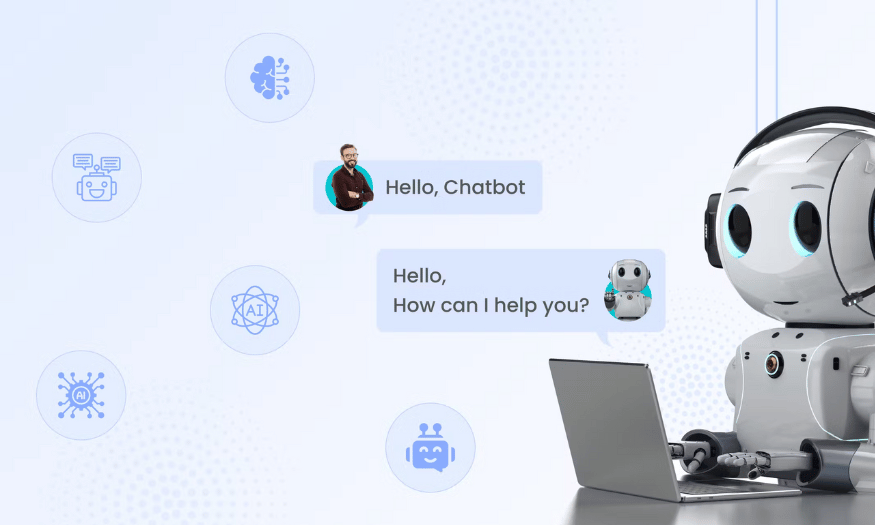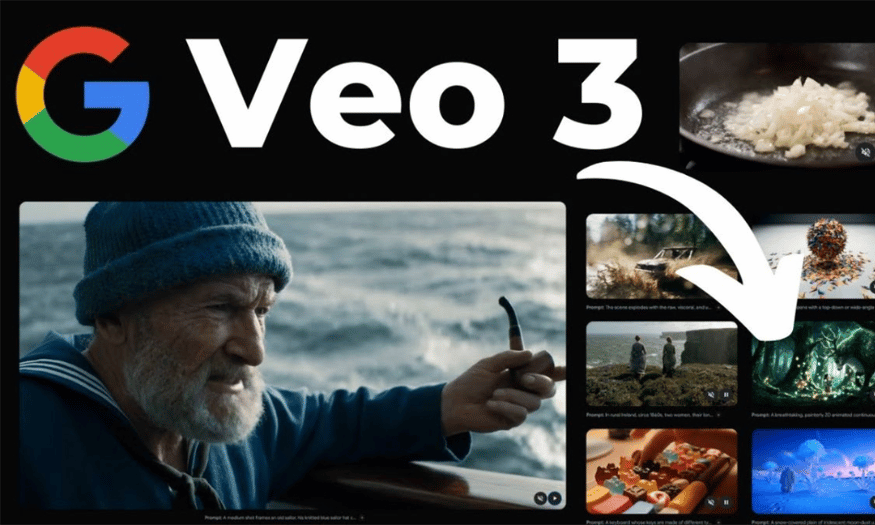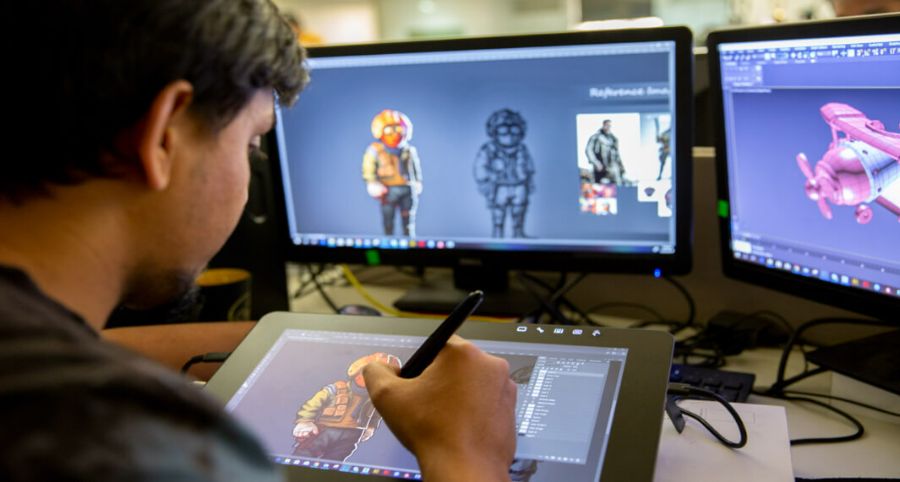Best Selling Products
Suggestions on How to Create Effective VEO 3 AI Prompts
Nội dung
- 1. What is Google Veo 3?
- 2. How to create AI videos with realistic dialogue and sound using Google Veo 3
- 2.1 Step 1: Access Google's Flow or Gemini platform
- 2.2 Step 2: Draft the detailed prompt (command) in English
- 2.3 Step 3: Set the number of video versions and video quality Veo 3
- 2.4 Step 4: Click send prompt and wait for the AI video to be created
- 3. Suggestions on how to create effective video prompts
- 3.1 Background
- 3.2 Characters
- 3.3 Action
- 3.4 Conversation
- 3.5 Expression
- 3.6 Environmental effects
- 4. Frequently asked questions about Google Veo 3
- 4.1 Is Google Veo 3 free?
- 4.2 What are the potential risks of using Google Veo 3?
- 4.3 Can Google Veo 3 Completely Replace Jobs in the Film Industry?
- 4.4 Does Google Veo 3 support multiple languages?
- 5. Conclusion
In the era of Industry 4.0, artificial intelligence (AI) is increasingly becoming an indispensable part of everyday life, from automating workflows to creating innovative products. VEO 3 AI, one of the powerful tools in this field, brings the ability to create content, images, and more with just simple commands. However, to maximize the potential of VEO 3 AI, creating effective prompts is extremely important. In this article, let's explore with Sadesign ways to create effective prompts for VEO 3 AI, helping you optimize output results and save time during use.
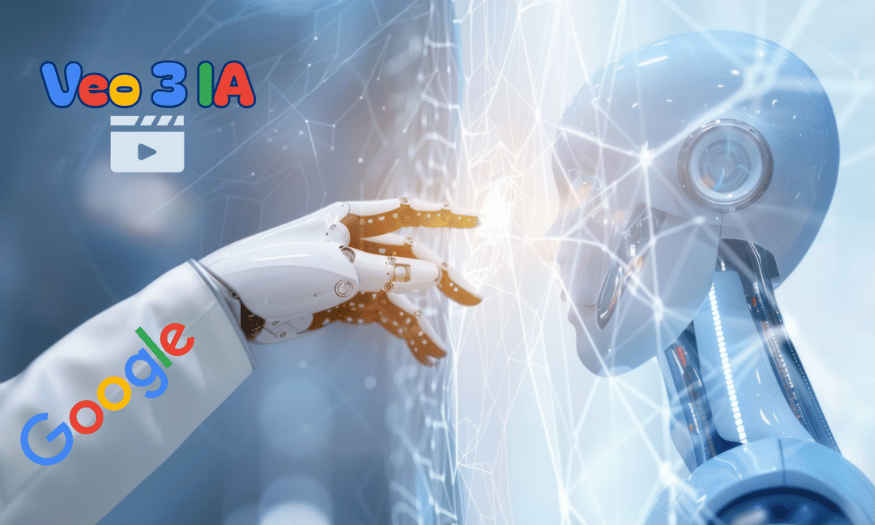
In the era of Industry 4.0, artificial intelligence (AI) is increasingly becoming an indispensable part of everyday life, from automating workflows to creating innovative products. VEO 3 AI, one of the powerful tools in this field, brings the ability to create content, images, and more with just simple commands. However, to maximize the potential of VEO 3 AI, creating effective prompts is extremely important. In this article, let's explore with Sadesign ways to create effective prompts for VEO 3 AI, helping you optimize output results and save time during use.
1. What is Google Veo 3?
Google Veo 3 is the most advanced artificial intelligence (AI) model in the field of video creation, developed by Google DeepMind and launched at the Google I/O 2025 event. It is a strong step forward from the previous version, Veo 2, with many outstanding features and improvements. Veo 3 is more than just a video creation tool; it brings the ability to turn abstract ideas into vivid, high-quality videos, just by entering text or images.
One of the highlights of Google Veo 3 is the ability to automatically synchronize audio and dialogue. Users can easily choose the voice, intonation and presentation style, thereby creating realistic videos, almost like professional cinema products. This not only saves time but also improves the quality of content, in line with the increasing needs in the field of communication and entertainment.
In addition, Google Veo 3 also integrates many advanced deep learning technologies, allowing it to understand and process semantics in a sophisticated way. Thanks to that, users can create highly interactive videos, suitable for each audience. With Google Veo 3, video production is no longer a complicated process, but becomes an interesting and easy creative experience for everyone.
.png)
2. How to create AI videos with realistic dialogue and sound using Google Veo 3
Creating AI videos with Google Veo 3 is an easy and fun process. To get started, just follow these simple steps, from accessing the platform to exporting the final video. Google Veo 3 not only saves you time but also delivers high-quality products that meet the diverse needs of users.
2.1 Step 1: Access Google's Flow or Gemini platform
To use Google Veo 3, the first thing you need to do is visit Google DeepMind's Veo website. Here, you will find two options: "Try in Gemini" or "Try in Flow". After selecting either option, the system will ask you to register for an account. Note that to get the most out of the features, you should choose the Google AI Ultra package, as this is the package that gives you full access to the powerful tools and functions of Veo 3. Currently, Google Veo 3 is only available in the US market, so if you are in another region, use a VPN to ensure you can register and use this package.
2.2 Step 2: Draft the detailed prompt (command) in English
Once you have an account, the next step is to compose a command for Google Veo 3 to create a video based on your ideas. You should select "New Project", then continue to select "Text to Video" and enter your prompt in the request box. Creating a detailed and clear prompt is very important, as it will determine the quality of the final video. If you have difficulty writing commands, do not hesitate to use support tools such as Chat GPT, Gemini or Content AI software. These tools will help you form ideas and create commands more easily and creatively, ensuring that the video created will reflect your wishes.
2.3 Step 3: Set the number of video versions and video quality Veo 3
Before sending the prompt, you need to adjust some important settings in the Google Veo 3 interface. In the "Settings" section, you will see the "Output per prompt" option, which allows you to determine the number of videos you want to create (up to 4 videos). In addition, in the "Quality" section, select "Highest Quality (Experimental Audio)" to ensure that the generated video has the sharpest sound and image possible. These settings will help you optimize the output, creating high-quality videos that suit your usage needs.
2.4 Step 4: Click send prompt and wait for the AI video to be created
Finally, after completing the above installation steps, you just need to press the send button and wait for the AI video to be created. Google Veo 3 will process the information and create a video with sharp images and sounds, ready for you to download and use. If you want to further enhance the experience, try adding effects and virtual camera controls by selecting "Add to Scene" and using "Frames to Video" as well as "Ingredients to Video". These options will help you customize the video as you like, create unique and impressive products, turn your ideas into reality in just a few minutes.
.png)
3. Suggestions on how to create effective video prompts
3.1 Background
Setting is the first and most important element in creating a video prompt. It helps set the stage for the story you want to tell and creates the space that viewers will enter. When describing the setting, pay attention to the time, place, and atmosphere of the situation. For example, if you want to create a video about a romantic evening, describe the flickering yellow lights reflecting on the water, the leaves falling in the gentle breeze, or the soft music playing from a nearby bar. These details not only help viewers visualize the video, but also set the mood for the video.
You should also consider the weather and season of the scene. A sunny day will have a different feel than a rainy afternoon. Clearly describe the atmosphere you want your viewers to feel, from lighting to sound, to create the most realistic and immersive experience.
3.2 Characters
Characters are the soul of the video and an indispensable element in any story. When creating a prompt, clearly define the number of characters, their gender, nationality, and clothing. A well-developed character will help the audience connect emotionally and follow the story more easily. For example, you can describe a young woman wearing a traditional ao dai, standing next to a man in a formal suit, both enjoying a cup of milk tea at a bustling coffee shop.
Don’t forget to pay attention to where your characters are in the frame. Are they standing or sitting? Are they close together or far apart? These factors will influence how viewers perceive the relationship between the characters and make your video more engaging. Make your characters come alive and real with specific descriptions.
3.3 Action
Action is the next important element in creating a compelling video. To bring your story to life, clearly describe who is doing what, and how the characters interact with each other. For example, you might write, “The woman smiles as she hears something interesting from the man, while he reaches out to point to a nearby diner.” Small actions like these will help your audience feel the interaction and connection between the characters.
Also, consider using strong verbs to make the action more vivid. Instead of just saying “they chatted,” you could describe it as “they laughed and shared funny stories.” This will create a positive atmosphere and make the video more engaging.
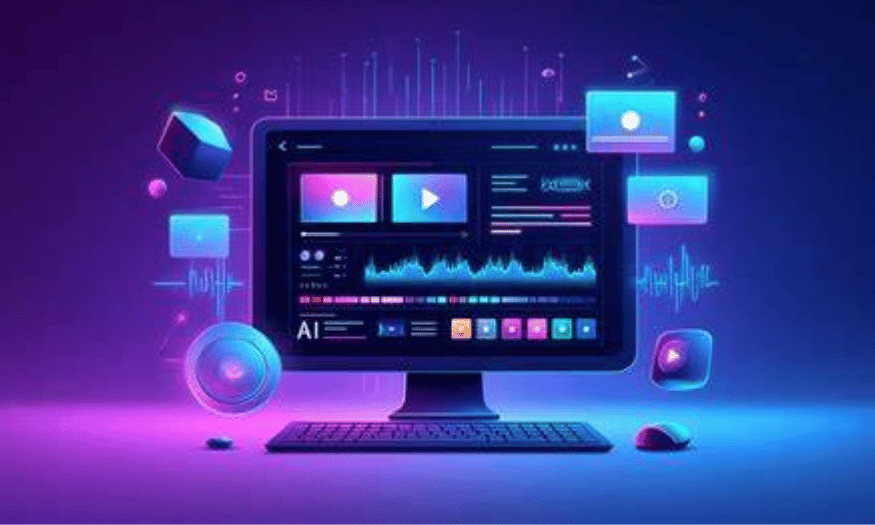
3.4 Conversation
Dialogue is an important element in conveying emotion and meaning in your videos. If your video contains dialogue, clearly describe the statements, questions, and answers between characters. This not only helps viewers better understand the relationships between the characters, but also conveys their emotions. For example, a simple question like "Do you want to go to dinner?" can have many different nuances depending on the tone and emotion of the speaker.
Pay attention to how the character expresses emotion through their words. A sentence can be said to be funny, serious, or even sad, and this will affect how the audience receives the message. These small details will help enrich the content of your video and add depth to your story.
3.5 Expression
Emotes are an essential element in creating a dynamic and authentic video. They help to clearly convey the emotions and moods of the characters. When writing your prompt, describe the expressions your characters make, from a bright smile to a surprised look or a serious expression. These expressions not only help viewers connect with the character, but also set the mood for the entire video.
For example, if you want to convey happiness, depict your character with a bright smile and sparkling eyes. Conversely, if your character is experiencing a sad moment, you can depict them with sad eyes and a pensive expression. These details will make your video more vivid and emotional, making it easier for your audience to feel the psychological state of the characters.
3.6 Environmental effects
Finally, ambient effects are what help create the atmosphere and atmosphere of your video. When creating your prompt, pay attention to things like lighting, color, and background noise. Warm lighting can create a cozy feel, while cool lighting can add a sense of mystery. Color also plays a role; a bright setting with vibrant colors will create a cheerful feel, while darker tones can create tension.
Along with that, background sound is also an indispensable element. Describe the sounds you want to appear in the video, from soft music to ambient noises such as birds chirping or rustling leaves. These effects will help your video become more realistic and attractive, creating a comprehensive experience for viewers.
(1).png)
4. Frequently asked questions about Google Veo 3
Apart from the concept of Google Veo 3 and how to use it to create AI videos, there are many other questions that users often ask. These questions will not only help you understand the technology better but also help you make an informed decision when using the service.
4.1 Is Google Veo 3 free?
No, Google Veo 3 is not a free service. To use the full features of Google Veo 3, users need to subscribe to the Google AI Ultra service package, which costs $249.99 per month, equivalent to about 6 million VND. This means that only users in the US can access this tool, which may be a hindrance for people in other regions who want to experience this advanced technology.
4.2 What are the potential risks of using Google Veo 3?
While Google Veo 3 offers many benefits, its use also comes with some potential risks. First, Google DeepMind has not released detailed information about the data used to train the model, which has raised concerns about intellectual property rights. Second, the possibility of creating deepfakes or misinformation is a concern; however, Google has integrated SynthID watermarking technology to mitigate this.
4.3 Can Google Veo 3 Completely Replace Jobs in the Film Industry?
While Google Veo 3 is capable of producing high-quality videos quickly, whether it will completely replace the work of the film industry is still an open question. Many argue that AI can assist and enhance the production process, but it cannot completely replace the creativity and emotion that humans bring. In fact, the combination of technology and humans can create more unique and rich artistic products.
4.4 Does Google Veo 3 support multiple languages?
Google Veo 3 was primarily developed with English in mind, but it does support a number of other languages. However, the quality and accuracy of the videos produced may not be as good as when using English. Users should experiment and tweak the commands to ensure that the content and emotion are conveyed as clearly as possible. This shows that, while technology is improving, using correct language is still important to achieve the best results.
(1).png)
5. Conclusion
Creating effective prompts for VEO 3 AI not only helps you get accurate results but also opens up many new creative opportunities. By applying the suggestions and methods mentioned above, you can enhance your ability to interact with AI, thereby optimizing your workflow and improving product quality. Hopefully, the information in the article will help you feel more confident when using VEO 3 AI, turning your ideas into reality easier and more effective than ever.










































